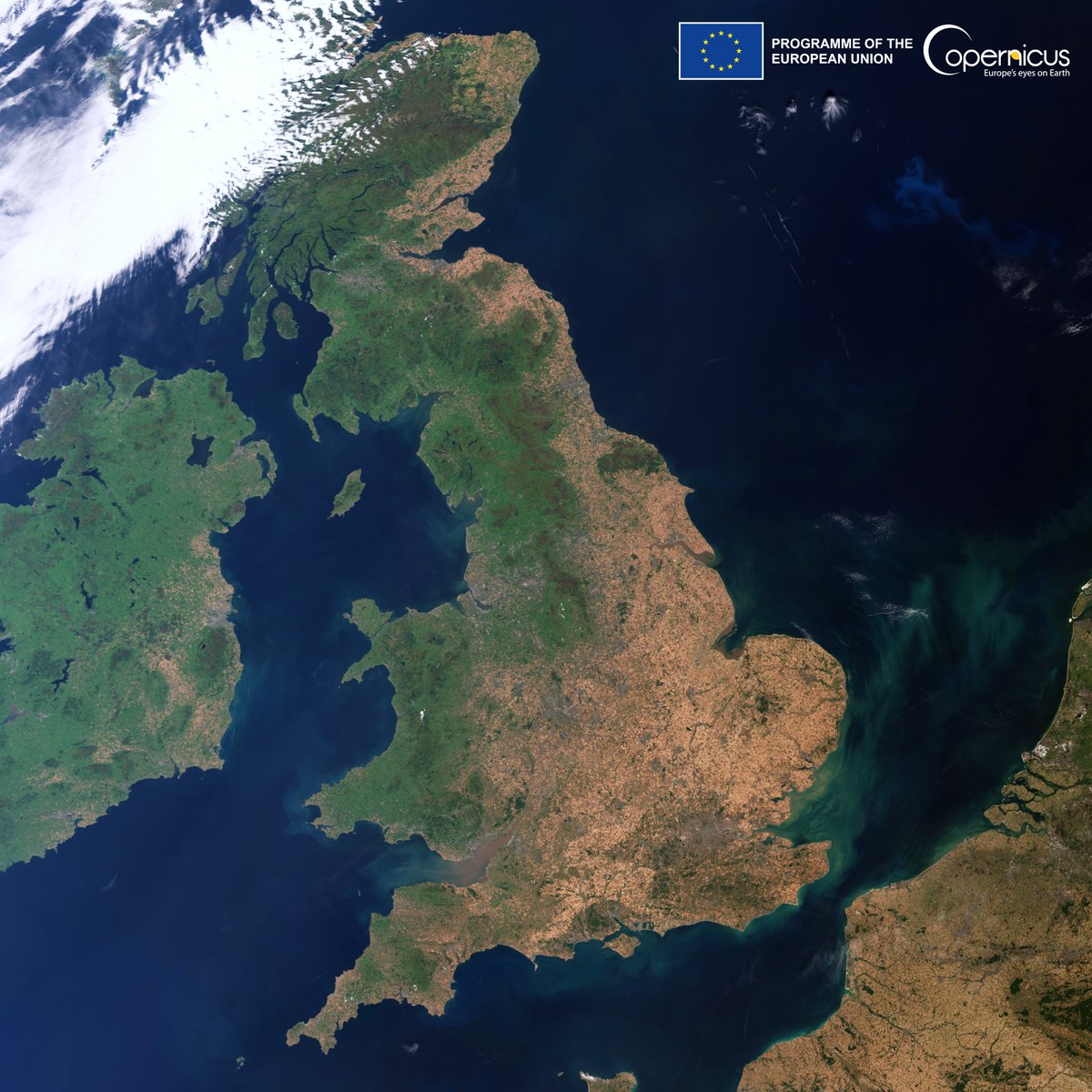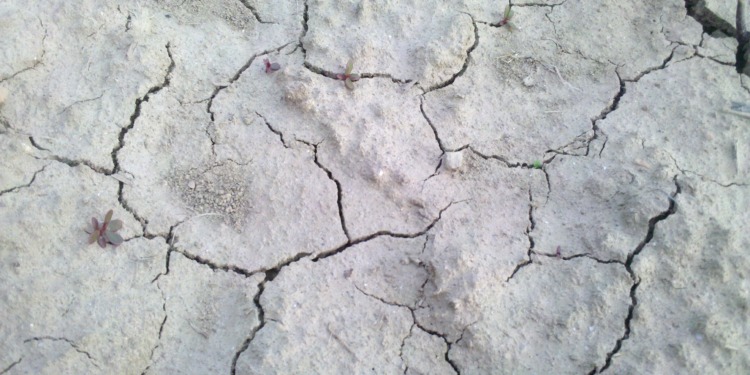Droughts affect nearly 55 million people globally every year. This year, they have affected the whole of Europe.
Since early 2022, Europe has experienced an extended period of unusually high temperatures and severe lack of rainfall, which together have resulted in the worst drought the continent has seen in over 500 years, according to a recent report from the European Commission’s Global Drought Observatory (GDO).
In 2022, #drought has affected the whole of Europe
Observe how our continent has changed with this mosaic of images acquired by #Copernicus #Sentinel2
between 1 July and 31 August
2021
2022
#Drought2022 pic.twitter.com/lXITzYwDFt
— Copernicus EU (@CopernicusEU) September 5, 2022
The report’s results indicate that two-thirds of European countries currently have some degree of drought warning in place, with 17% of the continent categorized under the highest rank of “alert” drought conditions, and a further 47% under “warning.” These results are based on the observatory’s Combined Drought Indicator (CDI), which takes into account three main drought indicators: precipitation, soil moisture, and vegetation stress.
Extremes in weather of this kind are something that Europe has previously watched from afar. However the worsening dry conditions have understandably sparked escalating concerns amongst the general public, national governments, and continent as a whole, providing a catalytic moment that has certainly opened European eyes to the implications of climate change.

But, how did we get here?
Well, since May this year there has been a severe lack of precipitation, with lower than average rainfall across Europe in June compared to 2021, and a simultaneous long-lasting heatwave, with some parts of the continent reaching unprecedented high temperatures of 40-43°C.
The fallout from the recent months of extreme heat and drought in Europe has brought about a spectrum of downstream societal, environmental and economic issues that are impacting human life at all levels.
Many of Europe’s rivers have dried up, which is an economic catastrophe for trade, as shipping lanes contribute $80,000,000,000 to the continent’s annual economy.
Germany’s low river levels in particular have impacted the country immensely. With extreme delays on its main shipping artery, The Rhine, freight costs have increased five-fold, and the German economy is predicted to take as much as a 0.5% drop in growth this year as a result.
#Copernicus allows the monitoring of the effects of the #drought ongoing in Europe
The water shortage
of the Rhine river near #Bonn
is quite visible when comparing #Sentinel2
images of August 2021 and August 2022 pic.twitter.com/RZ6YrWB7Jo
— Copernicus EU (@CopernicusEU) August 14, 2022
But Germany is not alone, with far-reaching wildfires, water shortages, and hosepipe bans – the butterfly effect of the current drought crisis is being felt widespread across the continent.
The environment is also bearing the brunt of the drought, as crop yields and harvests have been stunted, affecting not only farmers’ incomes and livelihoods, but also the local availability and price of foodstuffs in supermarkets. Salt production in France, and olive oil harvest and production in Spain, among many other imports and exports, have also been detrimentally affected by the ripples caused by the dry conditions.
The impact of the drought can even be seen in the trees, which are showing their stress reaction to the dry conditions through a color-changing display of “false autumn,” brought on by insufficient water supply.
Related Articles: Summer in Europe Like Never Before: Extreme Heat and Out-of-Control Wildfires | One of Earth’s Driest Places Sees 75% of Annual Rainfall in Just 3 Hours | Water Crisis in Italy: Five Regions Declare State of Emergency
To add further insult to an already very injured area, the energy sector is also experiencing issues, as water is essential for both the generation of hydroelectric energy and the cooling of nuclear power plants.
Generation of energy from hydropower has dropped by 20% this year across the UK and Europe, which is worrying for countries such as Italy, which obtains one-fifth of its energy from hydropower.
Insufficiencies in renewable energy could lead to a less environmentally friendly shift towards non-renewable sources of energy like coal and gas, however the complexity of this issue thickens even further, due to non-renewable commodities also being affected by shipping delays on the Rhine.
If all of these urgent and intensifying downstream effects of the drought weren’t enough to alert European citizens to the severity of the situation, then the recent re-emergence of historical landmarks, buildings and artifacts previously lost to the depths of rivers, lakes, and reservoirs serves as a stark reminder of the shrinking water levels.
From the depths of the Danube River to the banks of the Rhine, history is resurfacing in Europe amid a drought that has led to some of the lowest water levels of the past century. https://t.co/q6HTBHhVFW pic.twitter.com/MIEY6uYTZ0
— The New York Times (@nytimes) August 24, 2022
The GDO’s drought hazard report also predicts that these “warmer and drier than usual conditions are likely to occur in the western Euro-Mediterranean region in the coming months until November 2022,” and given the current trajectory of global climate warming past pre-industrial levels, we can expect to see extreme dry conditions increase in frequency and intensity going forward.
A report from the United Nations Convention to Combat Desertification 2022 highlights that if temperatures continue to rise, then this could lead to drought losses at a rate five times higher than present day, with the Mediterranean and the Atlantic regions of Europe predicted to be the worst affected.
Droughts are one of the deadliest climate hazards, and their devastating economic, environmental and societal fallout has historically been concentrated within the developing world.
But, with global temperatures rising, currently predicted to rise to 3°C above pre-industrial levels by 2100, many more parts of the world are at an increased risk of drought as a result of increased air temperature, higher evaporation rates, ground-level drying, and reduced snowfall.
Scientists are now confident that human-induced global warming makes the extreme heatwave and subsequent droughts we are seeing in Europe, as well as other parts of the world, both more severe and more frequent.
Therefore, urgent action is required on a local, continental and global scale to address this escalating crisis.
Widespread efforts to mitigate the effects of drought across Europe and the rest of the world have involved: UK farmers urging supermarkets to accept “wonky veg” due to crop failures yielding insufficient produce that meets the usual commercial standard, the Vatican authorities turning off water fountains throughout Holy See, and the UAE utilizing cloud-seeding technology to deliver electrical-charges to clouds and promote rainfall.
Going forward, focused education and changes to policies will be necessary to improve collective drought preparedness, and the ongoing efforts of organizations and conferences such as UN-Water, the Global Drought Observatory, and World Water Week 2022, will be essential in raising awareness of the issues we may face.
Implementation of strategies like improved water management, sustainable land management, and ecosystem restoration could also be effective solutions to help combat droughts in the future.
The extreme drought Europe is currently facing should act as a much-needed prompt and call to action for society to limit global warming to 1.5°C above pre-industrial levels, proactively reducing the risks of further drought-related damage to our society, environment and economy in the future.
Editor’s Note: The opinions expressed here by the authors are their own, not those of Impakter.com — In the Featured Photo: Dry ground in Italy. Featured Photo Credit: Wikimedia Commons.











